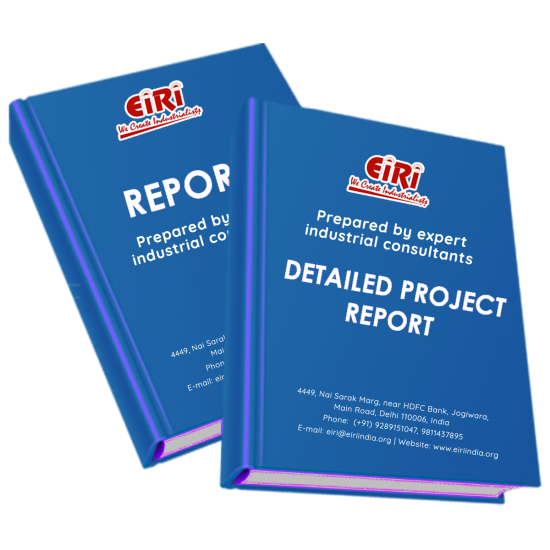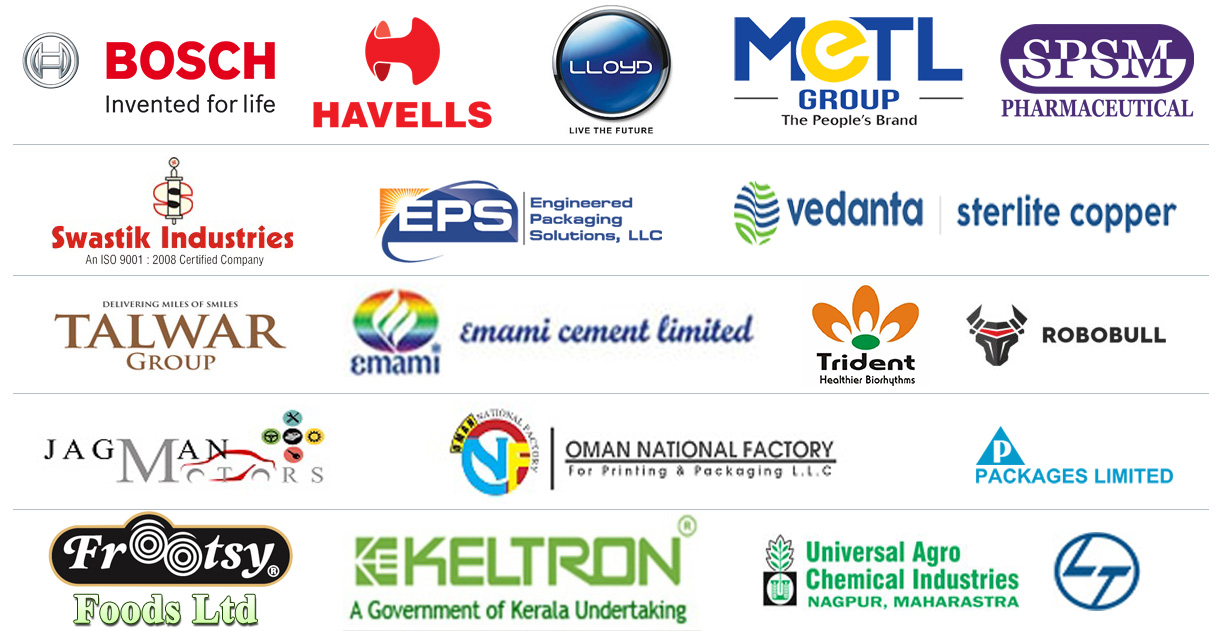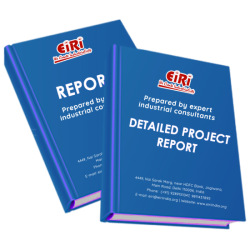Detailed Project Report on salicylic acid (c7h7o3) by supercritical carboxylation method

- More than 40 years of experience
- Managed by expert industrial consultants
- ISO 9001-2015 Certified
- Registered under MSME, UAM No: DL01E0012000
- 24/5 Research Support
Get your quesries resolved from an industry expert. Ask your queries before report or book purchase. - Custom Research Service
Speak to the our consultant to design an exclusive study to serve your research needs. - Quality Assurance
All reports are prepared by highly qualified consultants & verified by a panel of experts. - Information Security
Your personal & confidential information is safe & secure.
SALICYLIC ACID (C7H7O3) BY SUPERCRITICAL CARBOXYLATION METHOD
[CODE NO.4145]
Salicylic Acid is a small aromatic acid whose chemical name is monohydroxybenzoic acid. It is lipophilic in nature. It was first derived from the bark of Willow Tree. It derives its common name from a variety of sources related to it with a similar name, e.g., it is derived as a metabolic product of salicin (an alcoholic Beta- glycoside obtained from plants) and also it is an active metabolite produced from acetylsalicylic acid (aspirin). In nature, it occurs as clear and colourless crystals of an organic acid. The salt and ester derivatives of this compound are also widely used in organic chemistry and are known as salicylates. In plants, it occurs naturally as a growth hormone.
Structure of Salicylic Acid
Its structural formula is C6H4(OH)COOH, which can also be written as C7H6O3 in the condensed form. Its IUPAC name is 2-hydroxybenzoic acid. It contains a hydroxyl group (—OH group) attached at the ortho position with respect to the carboxylic acid functional group(—COOH group) present on the benzene ring. The molecular weight (or molar mass) of Salicylic Acid is 138.12 g/moI. The various forms in which the molecular structure of Salicylic Acid can be represented are given below:
All carbon atoms present in the benzene ring of Salicylic Acid are sp2 hybridized. Salicylic Acid forms an intramolecular hydrogen bond. In aqueous solution, Salicylic Acid, being an organic acid, dissociates to lose a proton from the carboxylic acid functional group. The resulting carboxylate ion (—COO-) undergoes intermolecular interaction with the hydrogen atom of the hydroxyl group (—OH), thereby leading to the formation of an intramolecular hydrogen bond.
The ortho hydroxy benzonic acid is known as salicylic acid, in the commerical terms. In natural sources, free salicylic acid is found in small quantities. It is found in leaves of tulips, hyacinths and voilets. It also occurs as a glycoside "Salicin" in Willow Park. This material has been used for the treatment of malaria from the middle of eighteenth century and the anti puretic effects in rehumatic fever were noted about 100 years later. Salicin has been covated to salicylic acid by hydrolyzis and oxidation:
// \ // \ // \
| || CH2OH | || CH2OH | || CO2H
| || O C5H11 | || OH----- | || OH
\\ / O -------- \\ / \\ /
Salicylic acid
But the increasing demand of this product has made its production possible by synthesis.
Salicylic acid is classified as a fine chemical and is used almost exclusively as a medicinal or as an intermediate in the manufacture of medicinals and pharmaceuticals. Actually, salicylic acid and its derivatives account for about one half the total amount of coal tar medicines produced in the United States chiefly because of the enormous sale of aspir in acetylsalicylic acid. Salicylic acid is usually manufactured by makers of phenol, the chief raw material, who engaged in general line of fine chemical manufacture. Aspirin, the chief product of which salicylic acid is the intermediate, is also commonly manufactured by the same producers, who sell it in bulk to pharmaceutical houses, which tablet and package it from sale.
Salicylic acid is the most important member of phenolic mono carboxylic acids. Its melting point 158*C (degree centigrade). It occurs in the Free State in the flowers of spiracaulmaria and as a methylester in oil of winter green, the essential oil of the ericacia, Cultheria procumbens and in many other essential oils. It’s obtained by general methods.
1. From anthranilic acid
2. O. Sulpho - O - Bromo - Benzonic acids
3. From O -Cresel from saliganing or Salicylaldehyde.
4. From phenoxides by the action of carbon diexide or carbon tetrachloride.
5. From O - bromophenol by treatment with butyl lithium inether followd by puringon to solid carbodioxide (H Gilman and C.E. Aruntzer, J Amer 1947)
It also promed when coumarin or indigo is fused with potash and when copper benzoate is distilled.
Salicylic acid, also known as O-Hydroxy benzonic and occurs in the form of its methyl ester as the chief constitutent of oil winter green from which it is isolated for theapeutic purposes. Salicylic acid finds wide use as an analgesic, antiseptic and in flavours and spices. It also acts as an ultra violet absorber. It is classified as a fine chemican and is used exclusively as a medicinal or as an intermediate in medicines. Aspirin is a widely known pain relieving medicine prepared from salicylid acid. The present production of salicylic acid is insuffinient to meet the demand.
A wide gap exists between its production and demand. The raw materials required for the manufacture of salicylic acid are phenol, caustic soda and sulphuric acid, all of wihc are available indigenously. The plant and machinery is also available indigenously and no foreign help whatsoever is needed for putting up this industry.
Salicylic acid is an old well known organic compound. It is O-hydroxy benzonic acid. It crystalizes out of water in the form of white needless and from alcohol as monoclinic prims.
Salicylic acid is used most exclusively as a medicinal and as an intermediate in the manufacture of medicinals and pharmaceuticals such as aspirin and methyl salicylate, in the manufacture of dyes and in some resin applications. Salicylic acid I.P. is used as an antiseptic and disinfeotant. It is superior to phenol. It is a strong irritant to the skin. Formulations of 10-20% salicylic acid in collodion (solution of nitrated cellulose in ether and alcohol) are used as a wait corn remover. Dusting powders containing 5% salicylic acid in combination with methanol, boric acid and starch are ised for treatment of over per spiration.
I.P grade salicylic acid should contain not less than 99.5% and not more than 101.0% of C7H6O3 calculated on dry basis. The purity of salicylic acid is analysed by titration with standardized alkali for which India pharmacopoeia gives the procedure. Technical salicylic acid assays approx 99% in purity and is generally yellowish tan to off-white in colour.
Systemic poisoning may occur when it is applied to large areas of the skin.
COST ESTIMATION
Plant Capacity 100 Ton/Day
Land & Building (12,000 sq.mt.) Rs. 5 Cr
Plant & Machinery Rs. 12.20 Cr
Working Capital for 1 Month Rs. 33.90 Cr
Total Capital Investment Rs. 51.75 Cr
Rate of Return 39%
Break Even Point 40%
- INTRODUCTION
- STRUCTURE OF SALICYLIC ACID
- SALICYLIC ACID
- PROPERTIES
- PHYSICAL PROPERTIES OF SALICYLIC ACID
- CHEMICAL PROPERTIES OF SALICYLIC ACID {REACTIONS OF
- SALICYLIC ACID)
- FORMATION OF ASPIRIN:
- ESTERIFICATION REACTION:
- SALICYLIC ACID IS A WHITE NEEDLE SHAPED CRYSTALLINE SUBSTANCE:
- SOLUBILITIES SALICYLIC ACID IN WATER WT%
- GRADES:
- SALICYLIC ACID AND RELATED COMPOUNDS
- USES & APPLICATIONS
- MARKET OVERVIEW OF SALICYLIC ACID
- MARKET GROWTH
- B.I.S. SPECIFICATION
- METHOD OF PREPARATION OF SALICYLIC ACID
- FROM PHENOL:
- FROM METHYL SALICYLATE:
- CARBOXYLATION OF PHENOL TO SALICYLIC ACID BY
- SUPERCRITICAL METHOD
- SEQUENCES IN SALICYLIC MANUFACTURE
- REACTION
- FLOW SHEET OF PROCESS
- RAW MATERIALS
- OTHER PROCESSES OF MANUFACTURE SALICYLIC ACID
- DISSOCIATION CONSTANTS OF THE SALICYLIC ACID
- IDENTICAL (SALCYLIC ACID)
- MANUFACTURING PROCESS FLOW SHEET FOR SALICYLIC ACID
- PROCESS IN DETAILS
- PRINCIPLES OF PLANT LAYOUT
- MAJOR PROVISIONS IN ROAD PLANNING FOR MULTIPURPOSE
- SERVICE ARE:
- PLANT LOCATION FACTORS
- PRIMARY FACTORS
- 1. RAW-MATERIAL SUPPLY:
- 2. MARKETS:
- 3. POWER AND FUEL SUPPLY:
- 4. WATER SUPPLY:
- 5. CLIMATE:
- 6. TRANSPORTATION:
- 7. WASTE DISPOSAL:
- 8. LABOR:
- 9. REGULATORY LAWS:
- 10. TAXES:
- 11. SITE CHARACTERISTICS:
- 12. COMMUNITY FACTORS:
- 13. VULNERABILITY TO WARTIME ATTACK:
- 14. FLOOD AND FIRE CONTROL:
- EXPLANATION OF TERMS USED IN THE PROJECT REPORT
- 1. DEPRECIATION:
- 2. FIXED ASSETS:
- 3. WORKING CAPITAL:
- 4. BREAK-EVEN POINT:
- 5. OTHER FIXED EXPENSES:
- 6. MARGIN MONEY:
- 7. TOTAL LOAD:
- 8. LAND AREA/MAN POWER RATIO:
- PROJECT IMPLEMENTATION SCHEDULES
- INTRODUCTION
- PROJECT HANDLING
- PROJECT SCHEDULING
- PROJECT CONSTRUCTION SCHEDULE
- TIME SCHEDULE
- SUPPLIERS OF PLANT AND MACHINERY
- SUPPLIERS OF RAW MATERIALS
APPENDIX – A:
01. PLANT ECONOMICS
02. LAND & BUILDING
03. PLANT AND MACHINERY
04. OTHER FIXED ASSESTS
05. FIXED CAPITAL
06. RAW MATERIAL
07. SALARY AND WAGES
08. UTILITIES AND OVERHEADS
09. TOTAL WORKING CAPITAL
10. TOTAL CAPITAL INVESTMENT
11. COST OF PRODUCTION
12. TURN OVER/ANNUM
13. BREAK EVEN POINT
14. RESOURCES FOR FINANCE
15. INSTALMENT PAYABLE IN 5 YEARS
16. DEPRECIATION CHART FOR 5 YEARS
17. PROFIT ANALYSIS FOR 5 YEARS
18. PROJECTED BALANCE SHEET FOR (5 YEARS)
How to Make Project Report?
Detailed Project Report (DPR) includes Present Market Position and Expected Future Demand, Technology, Manufacturing Process, Investment Opportunity, Plant Economics and Project Financials. comprehensive analysis from industry covering detailed reporting and evaluates the position of the industry by providing insights to the SWOT analysis of the industry.
Each report include Plant Capacity, requirement of Land & Building, Plant & Machinery, Flow Sheet Diagram, Raw Materials detail with suppliers list, Total Capital Investment along with detailed calculation on Rate of Return, Break-Even Analysis and Profitability Analysis. The report also provides a birds eye view of the global industry with details on projected market size and then progresses to evaluate the industry in detail.
We can prepare detailed project report on any industry as per your requirement.
We can also modify the project capacity and project cost as per your requirement. If you are planning to start a business, contact us today.
Detailed Project Report (DPR) gives you access to decisive data such as:
- Market growth drivers
- Factors limiting market growth
- Current market trends
- Market structure
- Key highlights
Overview of key market forces propelling and restraining market growth:
- Up-to-date analyses of market trends and technological improvements
- Pin-point analyses of market competition dynamics to offer you a competitive edge major competitors
- An array of graphics, BEP analysis of major industry segments
- Detailed analyses of industry trends
- A well-defined technological growth with an impact-analysis
- A clear understanding of the competitive landscape and key product segments
Need Customized Project Report?
- Ask for FREE project related details with our consultant/industry expert.
- Share your specific research requirements for customized project report.
- Request for due diligence and consumer centric studies.
- Still haven't found what you're looking for? Speak to our Custom Research Team
About Engineers India Research Institute:
Note: We can also prepare project report on any subject based on your requirement and country. If you need, we can modify the project capacity and project cost based on your requirement.
Our Clients

Our Approach
- Our research reports comprehensively cover Indian markets (can be modified as per your country), present investigation, standpoint and gauge for a time of five years*.
- The market conjectures are produced on the premise of optional research and are cross-accepted through associations with the business players
- We use dependable wellsprings of data and databases. What's more, data from such sources is handled by us and incorporated into the report
Why buy EIRI reports?
- Our project reports include detailed analysis that help to get industry Present Market Position and Expected Future Demand.
- Offer real analysis driving variables for the business and most recent business sector patterns in the business
- This report comprehends the present status of the business by clarifying a complete SWOT examination and investigation of the interest supply circumstance
- Report gives investigation and top to bottom money related correlation of real players/competitors
- The report gives gauges of key parameters which foresees the business execution























